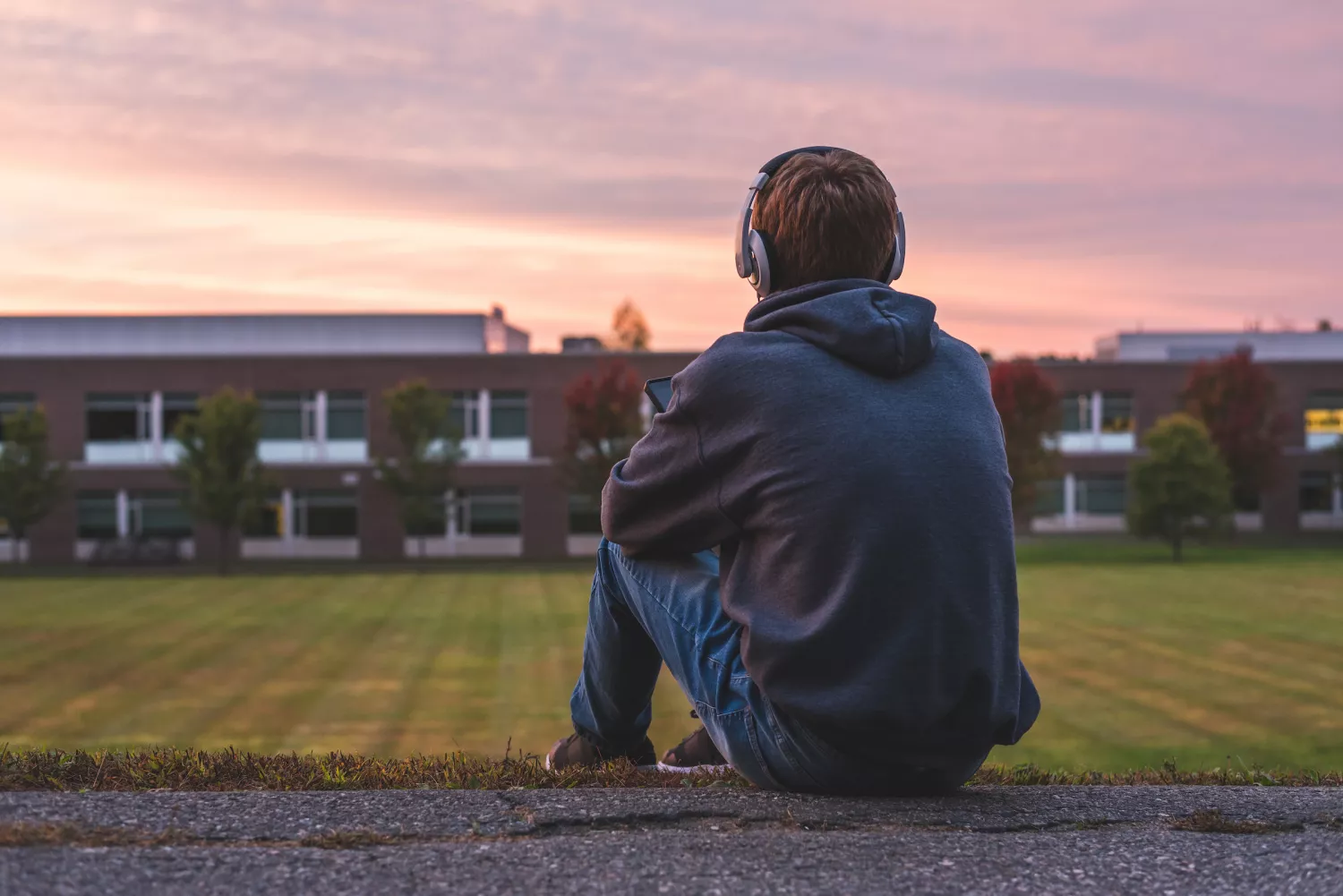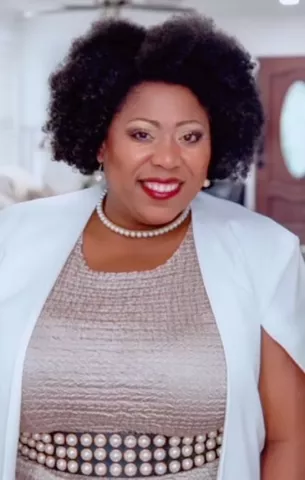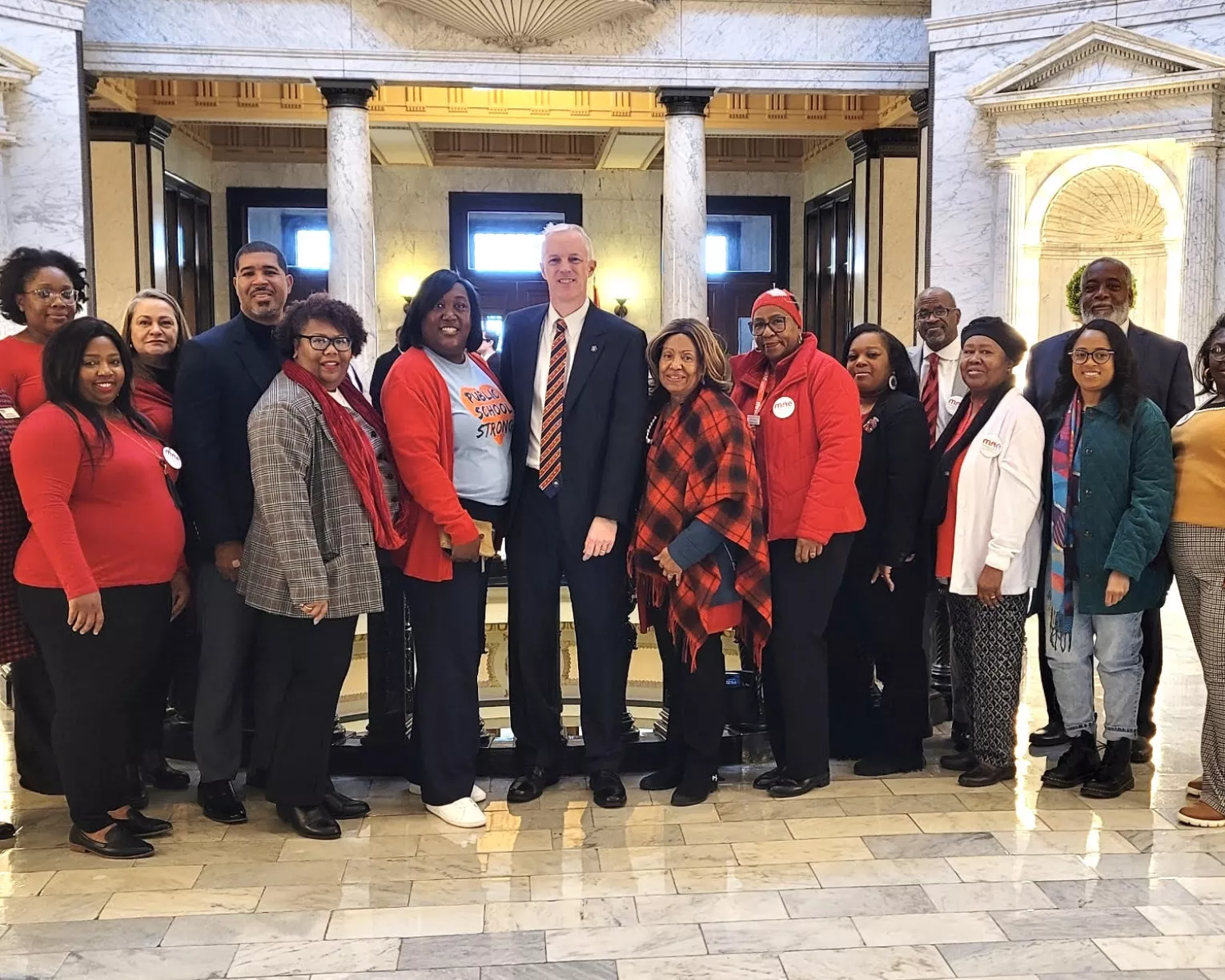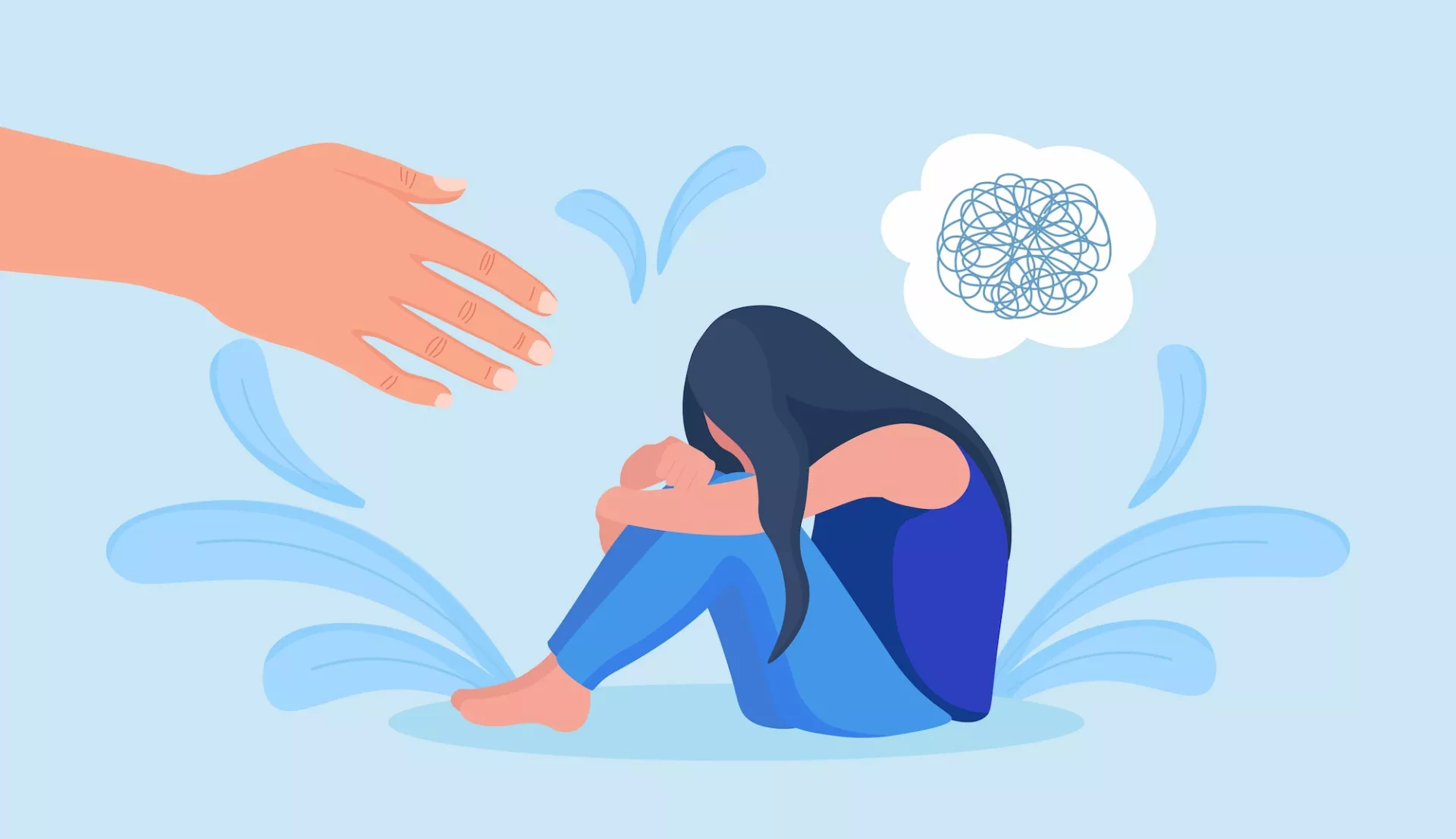
Key Takeaways
- As we mark Mental Health Awareness Month, these brave educators share how their trauma has helped them be better able to address trauma.
- Building relationships is essential to helping students with mental health struggles.
- To prevent violent outbursts and other expressions of trauma, educators need more staff and resources to help students find healthy ways to cope.
It takes tenacity and grit to be an educator, characteristics Leah Terry, a reading and Language Arts teacher in Las Vegas, Nevada, had to develop early in life. As a child she was sexually abused, once at gunpoint. She endured her parents' bitter divorce when she was just four years old, and, while her mother worked two or three jobs to make ends meet, Terry says she basically raised herself.
She got kicked out of school in eighth grade for smoking pot, left home at 16, and bounced around group homes, one of which she ran away from. She lived with her boyfriend for a while, then her boss at the pizza parlor where she worked. For a time, she even went to live with her abusive father, where they subsisted on food stamps.
Eventually, a social studies teacher noticed her struggles and her potential, and he sponsored her to go on an Outward Bound trip in the Florida Keys. It was there that she began to see that the story she was living and that she learned from her parents didn’t have to be her reality. It was that social studies teacher, and later, a high school counselor, who helped get her back on track and graduate. Now, she wants to be that educator for other students at risk.
“All of these experiences have helped me be the educator I am,” Terry says. She has empathy and a sort of sixth sense about students who struggle. But most of all, she can help students because they trust her.
“I build relationships. That’s where it’s at.”
In Las Vegas, where Terry is now an assistant principal, the economy depends on tourism. When COVID hit, most parents lost their jobs, and many students’ home lives went into disarray, Terry says.
“The kids are not OK,” she says. “The pain and trauma from the pandemic we all experienced at some level got absorbed by children. They’re still processing it.”
Sometimes it’s processed at school in inappropriate ways. Terry says there are second graders who are violent and using the “F” word, or fifth graders who are asking vulgar, sexual questions.
“It’s shocking, sad, and overwhelming to see how kids are acting,” she says.
Getting to Know Students Helps Educators Notice Changes
In those cases, it’s easy to pinpoint a child in crisis. But other students in crisis can be missed unless you know them, which is why Terry says building relationships is key.
Watch out for differences or changes, she advises. For example, one girl was suddenly clumsy and started falling down. She had sepsis from a decaying tooth and might not have made it if her educators had not noticed and gotten her immediate medical care.
Also, look out for kids who are quiet, keep their hoods on, or keep clothes on when it is warm outside.
“It may not always be trauma, but those are certainly reasons to investigate,” she says. “Keep that curiousness. Dig a little bit.”

Tread Lightly With Angry, Anxious or Quiet Students
Terry recommends being light and conversational with students and not getting too deep too quickly.
“Even if you suspect something is going on, you can’t just start asking about their home life because their alarm bells will go off,” she says. “They may be on alert, feeling like they are in trouble, or that maybe that they will get someone else in trouble.”
The best approach is to invite them to talk. For example, say, “tell me about how your weekend went” instead of asking more specific questions.
“Ultimately kids know right from wrong and have a feeling when something is happening that’s wrong,” she says. “When you have that relationship and build that trust, they are more likely to tell you.”
Ciciler Russ, the coordinator of Advancement Via Individual Determination (AVID) at Giunta Middle School in Hillsborough County, Florida, experienced substantial trauma as a child. There was violence in her neighborhood, domestic violence at home that once led to homelessness, and racial and gender discrimination at school, all of which, she says, fueled her journey as an educator.
Let Students Know Your Stories to Create Understanding
“I am a compassionate, vigilant, and restorative educator,” Russ says. “I have learned how to take both the bitter and sweetness of my trauma and package it in such a way to teach ‘the whole child’ by providing a judgement free learning environment for every class for every student.”
Like Terry, her approach to teaching is to build relationships first. She is completely transparent as an educator, letting her students know that she, too, was once a child and a student who struggled.

“I have found that when students find an educator who understands, they feel safe, which brings about a readiness and willingness to begin or continue their healing process,” Russ says.
When she was young, “trauma” wasn’t spoken of, let alone addressed.
“We’ve worked hard to raise awareness about trauma,” she says. “We now know that we cannot heal from things that we ignore and bury.”
Barbie Collette, a Vermont special educator and literacy interventionist, is keenly aware that healing cannot begin if trauma is ignored. Without detailing the events, she says her own trauma experiences have been very present throughout her life, and she works hard on processing it, which informs her work as an educator.
Students in Crisis Cannot Focus
“Trauma is incredibly distracting, and if you haven’t experienced that kind of distraction, you might look at a student and think they have focus issues, or maybe ADHD,” Collette says.
Once she had a transfer student whose father was murdered and the people who murdered him were threatening him and his mother. He also had learning disabilities, and was placed on Collette’s caseload.
“Once the trial began, he was just unable to be present in any way,” she says. “I knew that when you are in that place, you are paralyzed and disassociated in all interactions. I knew where he was coming from, and I tried things with him that worked for me to open up to the idea that I needed help.”

Collette knew, for example, that physical activity can be a powerful way to let your guard down for a little while, long enough for some messages to get in that there are people who understand, who want to help, and that healing is possible.
Their school is in a rural area, and she encouraged him to take long walks in the woods, as she had done.
“Eventually he got the message that he could open up to someone who had the skills to help him,” Collette says.
She says there a lot of students are walking around with trauma and have been for a long time. In her area of rural Vermont, there is a lot of poverty, hopelessness and, along with it, addiction, family abuse and sexual abuse.
She noticed an uptick in 2016, with the changing tenor in our national conversation.
“Things you might hear your grandfather say that you’d never repeat began to be said at school, things that were deeply racist, sexist, or homophobic,” she says.
And then came COVID.
“Some kids went to some really terrifying places for 24 hours a day, 7 days a week, while some went to incredibly supportive places, but they came back to school together with all kinds of different experiences,” she explains.
Educators Faced with Student Trauma Nationwide
Some days, Collette says, it feels as though there is something broken beyond repair, and educators everywhere struggle mightily.
Students have become violent, she says, and sometimes throw objects at her. That pain and rage is then witnessed by the other students, who often internalize it because they don’t know what else to do with their distress.
The problem is pervasive, she says. In rural, suburban and urban areas, the majority of schools are not yet on the upswing on dealing with trauma, but those that have adequate staffing and strong leadership with systems in place for supports.
“Schools need more special educators, more counselors,” Collette says.
Collette says when a student is in a mental health crisis, it’s important to choose at least one staff member who is going to build a strong relationship with them. It’s challenging work to be in a relationship with someone in that place, she admits, but a special educator, counselor, school nurse, or coach, can make an enormous impact.
She tries to find ways for students to express feelings before they get out of control. Her favorite strategy is to have students draw a horizontal line and then make a graph of the entire day, marking hours with the highs and lows.
“The act of rewinding and making a visual of their day can be powerful, and after seeing their patterns, they eventually tell me about a high or low,” she says. “The graph allows them a way to process what they’re feeling without words. Over time, I’ll have more leeway to say, ‘I’m curious what’s happening here with this low. Looks like that sucked. Want to tell me about it?’”
Sometimes it is enough to notice, she says. By asking students to make the graph, you are validating their feelings without them having to tell you exactly what they are.
Like fellow educators Terry and Russ, Collette says knowing your students is essential. If you see that a student has withdrawn, that’s a sign to look for. A change in appearance is another flag, or the hoodie that won’t come down.
But she says sometimes it is better to let the hoodie stay up.
“I know what it’s like to want to hide,” she says. “There are students who need that hood all the way up; they’re turtled in that sweatshirt for safety and need you to stop talking about how hot it is. It may seem irrational, but that student could be hanging on for dear life.”
Noticing all of your students and trying to relate can help tremendously, but Collette knows that the mental health problem is a chasm too deep and too wide for current staff to handle without support, mentoring, and proper training. That requires more funding.
“If people don’t wake up, and don’t see what’s happening, we’re going to lose all the good educators who want to maintain their own mental health and refuse to carry the weight without help,” she warns. “When we lose all the good ones, critics will say, ‘see public schools don’t work,’ and we’re going to lose public education. That’s the end game.”

